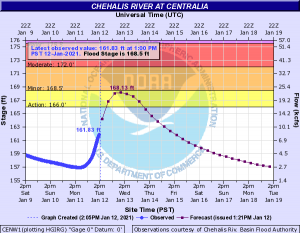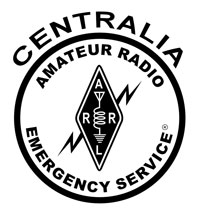 Fall has arrived and that isn’t a bad thing, especially when we remember the 110 degree temperatures this year during Field Day. The 70 degree fall days are a welcome relief. A person I know says “I can smell cool temperature and rain… and I love it!”. With the arrival of September and now October, we also know we must switch gears from Red Flag training to weather related (especially flood related) training.
Fall has arrived and that isn’t a bad thing, especially when we remember the 110 degree temperatures this year during Field Day. The 70 degree fall days are a welcome relief. A person I know says “I can smell cool temperature and rain… and I love it!”. With the arrival of September and now October, we also know we must switch gears from Red Flag training to weather related (especially flood related) training.
So our first training session in October, will put us back in the Centralia Emergency Operations Center (EOC) for a refresher course on how our community officials deal with serious flooding, windstorms, ice storms and other weather related events. Centralia’s EOC is small compared to bigger city locations but it serves us well. We have all the normal EOC related positions, Incident Commander, Public Information Officer, Safety, Liaison, Operations, Planning, Logistics and finance and of course Amateur Radio but it is in an intimate setting where everyone knows each other. When our hams connected headsets, for example, to limit noise in the room, the Incident Commander asked us to remove them so he could hear what our ARES team members were reporting saying it was exactly the information he wanted to hear. Our ARES radios are located about eight feet from the IC’s desk and as I remind our team members, everybody hears what we say over the radios. This first training session in October directs our team’s thinking from a simple ARES team to a larger community collection of first responders all working together for the safety of our region.
Our ARES Simulated Emergency Test (SET) exercise will follow only a few days later. Our training tends to follow a different track quite often usually dealing with specific situations related to our community and our location. For this SET exercise, we will simulate a failure of our main repeater requiring everyone to switch operations to our alternate repeater. With multiple location assignments, the team will spread out and pass message traffic from the very edges of our repeater’s propagation area. Can we operate on HT’s? If you can’t be heard, why and what can you do to make communications work? We’ve experienced a few minor issues with this repeater and don’t exactly know how it will perform so it’s time to put it (and us) to the test.
Fall is beautiful in our area but we have experienced four “100 year floods” in the last 20 years or so, each one coming with its own issues that push our emergency operations to the limit. So let the leaves fall and the rain come. It’s time to get ready for whatever Mother Nature has in store for us.

